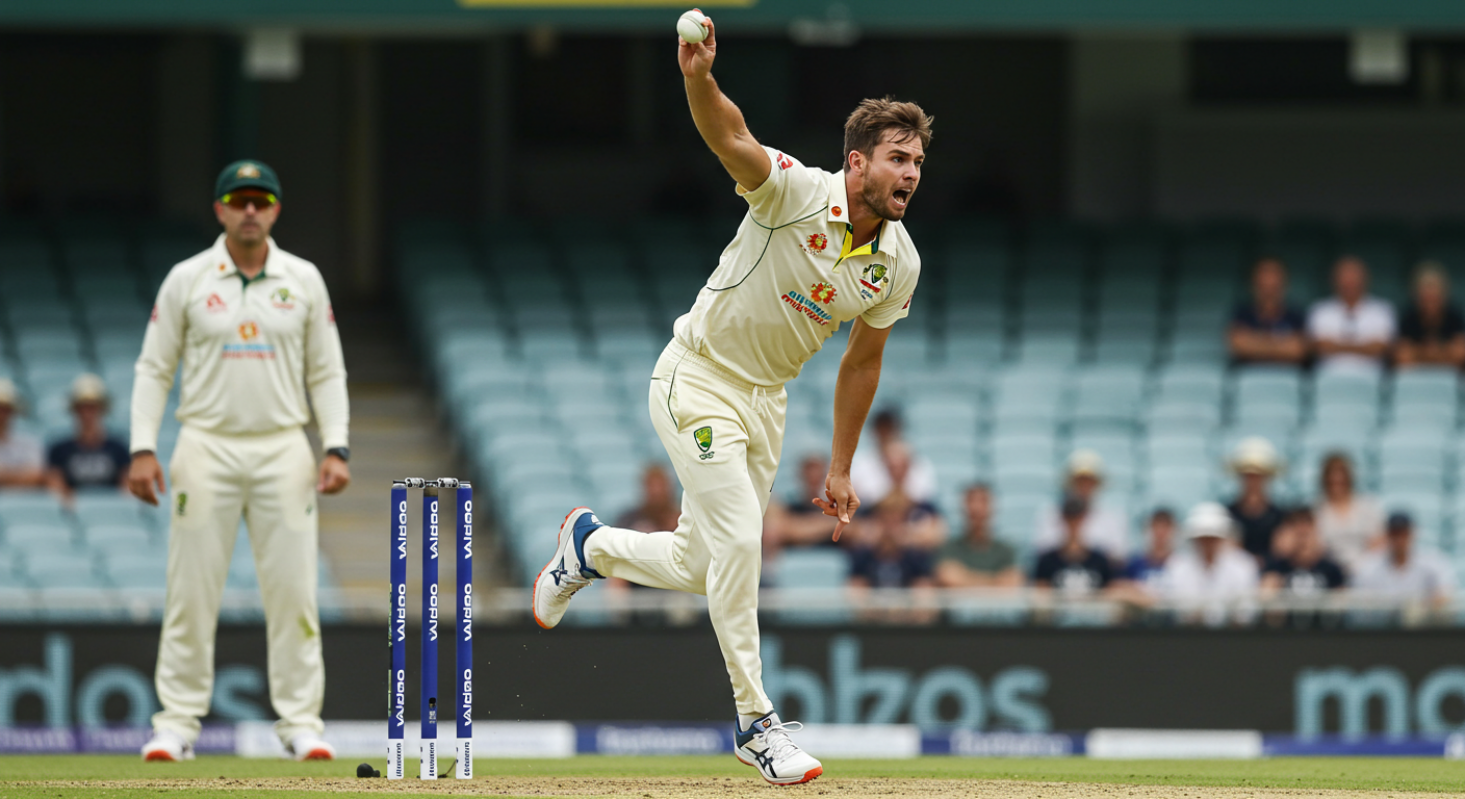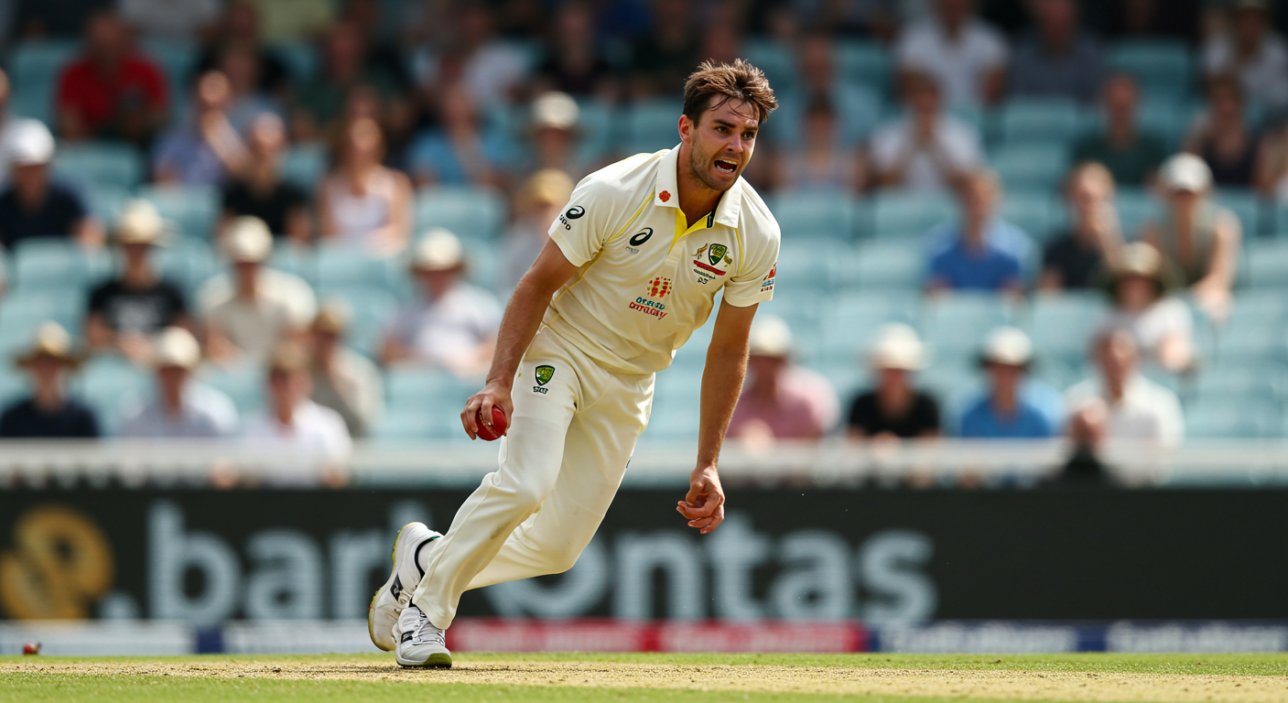
The Evolution of Mitchell Starc: From Raw Talent to Tactical Weapon
In the pantheon of modern fast bowlers, few have been as polarising, explosive, or influential as Mitchell Starc. Tall, left-armed, and relentlessly quick, Starc has carved a unique path in international cricket — one marked by raw potential, frustrating inconsistency, and moments of terrifying brilliance.
His journey has not been linear. There have been injuries, technical tweaks, and phases of self-doubt. But over the last decade, Starc has transformed from an erratic young paceman into a tactical weapon, capable of changing the course of a match with a single delivery.
This article charts that transformation — from his early days as an undercooked prospect with a thunderbolt of a yorker, to a senior pro deploying pace, swing, and smarts with surgical precision. Mitchell Starc didn’t just grow into his body — he grew into his role as Australia’s game-breaker-in-chief.
1. Early Promise and the Left-Arm X-Factor

Born in New South Wales in 1990, Mitchell Starc emerged on the domestic scene with two rare qualities: express pace and a left-arm angle. In a country obsessed with right-arm quicks, his natural variation stood out immediately. His height and high release point made him especially effective with the new ball — and occasionally unplayable with the old one.
He debuted for Australia in late 2010, a raw 20-year-old with all the tools but little refinement. Early spells were erratic. His run-up was stuttery, his lengths inconsistent. But the talent was undeniable — so too was the ability to bowl a swinging yorker at 150kph.
Australia’s selectors persisted, despite a string of lukewarm performances. What kept them invested was the potential to shape matches — a quality he demonstrated in flashes, especially in ODI cricket where his pace unsettled top orders and disrupted middle overs.
Even at this stage, it was clear: Starc didn’t need to bowl perfect spells. He just needed to bowl the right ball at the right moment. And once he learned how to do that consistently, his rise would be inevitable.
2. Mitchell Starc’s Injury Setbacks and the Road to Resilience
Starc’s early promise was often undercut by his body. Between 2011 and 2015, he suffered a series of setbacks — foot fractures, ankle issues, and stress injuries that stalled his progress and forced technical reworks.
At times, the stop-start rhythm of his career was frustrating to watch. He’d return with venom, only to break down again. But behind the scenes, something was happening: he was learning patience. These interruptions didn’t just test his body — they reshaped his mental game.
Working with Australia’s backroom staff, Starc began refining his action for greater repeatability and reduced strain. His run-up became smoother, his follow-through more stable. The brutal pace remained, but now it came with more control.
The turning point came during the 2015 World Cup, hosted in Australia and New Zealand. Fit and firing, Starc took 22 wickets at an astonishing average of 10.18, leading Australia to the title and announcing himself as a fearsome white-ball force.
More importantly, it was a tournament that proved he could sustain performance across formats — not just as a tearaway, but as a thinking, durable strike bowler. The physical recovery was complete. The psychological shift was just beginning.
3. Tactical Refinement and the Art of the Yorker

As Mitchell Starc matured, so did his bowling philosophy. Gone were the days of simply charging in and hoping to intimidate. Instead, he began to approach overs as mini-battles, thinking two or three balls ahead. The most dangerous version of Starc was now also the most calculated.
Central to his evolution was the mastery of the late-swinging yorker. While many bowlers flirt with the delivery, Starc turned it into a weapon. Executed from wide of the crease with full pace and vicious swing, it regularly uprooted middle stumps and toes alike.
He began using it not just at the death in white-ball cricket, but during red-ball spells — often as a surprise option to tail-enders or a pressure-breaker when batters had settled. The yorker wasn’t his only tool, but it was his most feared.
At the same time, Starc developed better length control, especially in Test cricket. He learned to bowl tighter lines to right-handers, using the angle across them to draw edges or pin them LBW with the one that swung in.
Rather than abandoning aggression, he channelled it. He became a bowler who could still bowl 145+ kph — but who knew when to back off, when to probe, and when to attack with full force.
4. Ashes Duels and the Burden of Expectation
The Ashes, as ever, brought out both the best and most scrutinised sides of Starc. In England, he was often criticised for his inconsistency — at times too full, too wide, or too one-dimensional in seaming conditions. But back home, he was lethal.
In the 2017–18 Ashes, Starc bowled with menace, claiming 22 wickets in four Tests as Australia reclaimed the urn. His pace, bounce, and late swing terrorised England’s middle and lower order. He struck fear — not just wickets.
Yet criticism always seemed to follow. Some labelled him ‘too loose’ or not penetrative enough with the older ball. But these assessments often missed the bigger picture: Starc was evolving not into McGrath, but into his own brand of weapon — one whose job wasn’t to dry up runs, but to break games open.
His role was never containment. It was impact. And though the public and pundits often questioned his place, captains rarely did. Because when a batter is 70 not out and Starc comes steaming in with a reversing ball — suddenly, everything changes.
By his late twenties, he wasn’t just a fast bowler — he was Australia’s enforcer, willing to absorb criticism, bowl the hard overs, and take the moments that mattered most.
5. World Tournaments and Big-Match Mentality

Few bowlers are as synonymous with ICC tournaments as Mitchell Starc. While some thrive in bilateral series, Starc saves his most clinical spells for the global stage.
After dominating in 2015, he returned in the 2019 Cricket World Cup even better — topping the wicket charts again, this time with 27 scalps at an average of 18.59. He wasn’t just taking wickets; he was shaping matches. His spell to Ben Stokes at Lord’s, which cut through England’s middle order, was a masterclass in late swing, pace, and precision.
What set Starc apart was his temperament. He could handle the pressure of knockout games, hostile crowds, and world-class batters without flinching. He became Australia’s banker — the bowler you turned to in the 8th or 48th over when control was slipping.
In T20s, too, he adapted. While some feared he’d struggle to evolve in the shortest format, Starc embraced the challenge. His yorkers became more accurate, his slower balls deceptive, and his ability to read match scenarios — particularly in the final overs — made him indispensable.
These performances weren’t flukes. They were the product of experience, training, and a growing understanding of when and how to be lethal. When the stakes rose, so did Starc.
6. Second Winds and the Redefinition of Longevity
Fast bowlers rarely age gently. Bodies break down, pace dips, and rhythm falters. But Mitchell Starc — now into his thirties — has rewritten that script.
Rather than fade, he’s recalibrated. While he still bowls fast, his focus now is on smart spells — three-over bursts with strategic field placements, or spells designed to target specific match-ups. He no longer chases top speeds every ball. Instead, he varies length, uses the crease more intelligently, and trusts his swing to do the damage.
Fitness has played a crucial role. A revamped training regime and smarter workload management have allowed him to remain a central figure across all formats — even as peers fall to injuries or opt out of red-ball cricket.
And with age has come confidence without bravado. Starc no longer needs to prove anything. He knows his role — not just as a strike bowler, but as a mentor to younger quicks like Jhye Richardson and Lance Morris. He shares knowledge, sets tone, and shows how to survive in one of cricket’s most brutal roles.
Mitchell Starc’s second wind hasn’t been about reinvention. It’s been about evolution — proof that even the fiercest of weapons can be sharpened with time.
7. The Final Stages: Adaptability in a Changing Game

As cricket continues to evolve — with packed calendars, shifting formats, and a growing emphasis on T20 leagues — the demands on fast bowlers have never been greater. Yet Mitchell Starc has remained relevant, largely because of his ability to adapt without losing his core identity.
While some bowlers have narrowed their focus to white-ball cricket, Starc has continued to be a frontline Test asset. His spells in the 2021–22 Ashes were a reminder that when the conditions suit, he remains unplayable. His opening bursts with the new ball, combined with lethal reverse swing later in the innings, can dismantle even the most patient batting line-ups.
In white-ball cricket, he’s continued to evolve his death-over approach — mixing pace off the ball, bluffing with wide lines, and returning to his trusted yorker when it matters most.
He’s also begun to pick his moments, focusing on peaking for key series or tournaments. That strategic pacing — both mental and physical — has allowed him to extend his shelf life in a role that rarely forgives attrition.
8. A Legacy Defined by Impact, Not Volume
Mitchell Starc may never match the career tallies of Glenn McGrath or James Anderson. But his impact isn’t measured in sheer numbers — it’s in moments. The World Cup spells. The Ashes breakthroughs. The matches where he flipped momentum with one unplayable ball.
His legacy will be that of a game-changer — a bowler who, even in an era of data and predictability, could still unsettle the best with raw pace and reverse swing.
He’s also helped redefine the role of the modern fast bowler. Starc has shown that aggression doesn’t have to mean chaos, and that pace can coexist with subtlety. He’s inspired a generation of left-arm quicks and reminded the cricketing world that express pace, when harnessed correctly, is still the most thrilling weapon in the sport.
Mitchell Starc: From Chaos to Control — The Complete Fast Bowler

Mitchell Starc’s evolution has been one of the most compelling stories in modern cricket. From a wild, unpredictable quick with a slingy release and raw pace, he’s matured into a strategic, multi-format specialist who can dismantle teams across conditions and continents.
His journey wasn’t smooth — but that’s what makes it resonate. The injuries, the criticism, the technical adjustments — all of it forged a bowler who understands the demands of elite sport and the need to constantly evolve.
Today, Starc stands not just as a match-winner, but as a leader and blueprint for future generations. He’s proof that fast bowling isn’t just about pace — it’s about timing, intelligence, and transformation. And as long as he’s steaming in with a red or white ball in hand, few batters sleep easy.
From raw talent to tactical weapon, Mitchell Starc has earned his place among Australia’s greats — one toe-crushing yorker at a time.





